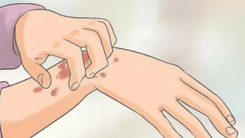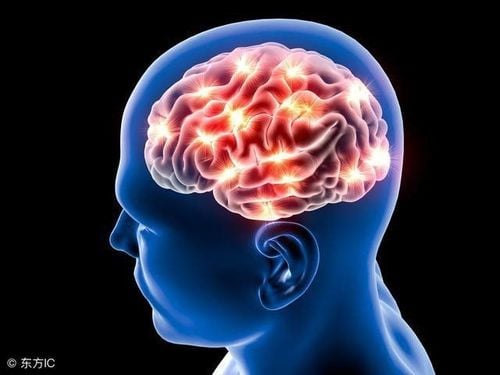Numbness in the hands and feet, also known as peripheral neuropathy, is a condition that limits motor function and interferes with daily activities. In severe cases, it increases the risk of falls, injuries, and a decline in quality of life. Understanding the causes of this condition is essential for timely and appropriate treatment and prevention.
1. What is Numbness in the Elderly?
Numbness in the hands and feet, sometimes referred to as "paresthesia," involves the partial or complete loss of sensation in affected areas. Individuals may lose the ability to feel touch, pain, or temperature changes (hot or cold). This occurs when nerves fail to send signals to the brain effectively.
Temporary numbness can result from sitting or lying in positions that exert too much pressure on nerves or reduce blood flow. However, persistent or unexplained numbness may indicate an underlying medical condition.
Long-term numbness or tingling in the legs and feet can stem from conditions like multiple sclerosis (MS), diabetes, peripheral artery disease, or fibromyalgia.
Commonly, numbness is experienced in the fingers, hands, feet, arms, or legs, and it may sometimes feel like tingling or "pins and needles." In elderly individuals, numbness often occurs in the lower legs, below the knees, or in various parts of the feet. This condition can lead to complications such as falls or unawareness of injuries or infections.
2. Causes of Numbness in the Elderly
Chronic or prolonged numbness is usually a symptom of an underlying health condition. Research indicates numerous causes, including:
2.1. Poor Posture While Sitting or Sleeping
Elderly individuals may sit or sleep in positions that place pressure on nerves or reduce blood flow to the limbs. Over time, this can result in temporary numbness, medically known as transient paresthesia.
Common posture-related causes include:
- Sitting with legs crossed for extended periods
- Sitting or kneeling for too long
- Sitting on the legs
- Wearing tight clothing, socks, or shoes
2.2. Injuries
Injuries to the body, spine, hips, legs, ankles, or feet in the elderly can compress nerves, leading to numbness in these areas.

2.3. Diabetes Complications
Diabetic neuropathy is a common complication in older adults with diabetes. This condition damages nerves, causing numbness, tingling, or pain in the hands and feet.
2.4. Back Pain and Sciatica
Back problems, such as herniated or ruptured spinal discs, can compress nerves that travel to the limbs, resulting in numbness or sensory disturbances.
Sciatica, caused by irritation or compression of the sciatic nerve running from the lower back to the legs and arms, may also cause tingling or numbness in the hands and feet.
2.5. Tarsal Tunnel Syndrome
This occurs when a nerve running along the back of the leg and inside the ankle becomes compressed or damaged.
The tarsal tunnel is a narrow area inside the ankle. Compression of this nerve causes numbness, burning, tingling, and pain in the ankle, heel, and foot.
2.6. Peripheral Artery Disease (PAD)
PAD involves the narrowing of peripheral arteries in the legs, arms, or stomach, reducing blood flow.
The legs are particularly affected, and symptoms include pain, cramping, or numbness, especially during activities like walking or climbing stairs.
Symptoms often subside after a few minutes of rest.
2.7. Tumors or Other Abnormal Growths
Tumors, cysts, abscesses, or benign masses can exert pressure on the brain, spinal cord, or nerves in the legs and feet. This pressure reduces blood flow, leading to numbness.
2.8. Alcohol Consumption
Toxins in alcohol can damage nerves, particularly in the feet, causing numbness. Chronic or excessive alcohol consumption can lead to nerve damage associated with deficiencies in B vitamins, such as B1 (thiamine), B9 (folate), and B12.
2.9. Fibromyalgia
Fibromyalgia is a chronic condition that causes widespread muscle pain and stiffness. Some elderly individuals with fibromyalgia also experience numbness and tingling in the hands and feet.
Common symptoms include:
Morning stiffness or pain without a clear cause
Chronic fatigue
Memory issues or difficulty concentrating, often referred to as "fibro fog"
Understanding the potential causes of numbness in the elderly can help with early diagnosis and proper management of the condition.

2.10. Restless Leg Syndrome (RLS)
Almost all elderly individuals with fibromyalgia experience symptoms in multiple parts of the body at least three times over a three-month period. If numbness in the legs and feet is not accompanied by other symptoms or is not persistent, it is unlikely to be caused by fibromyalgia.
2.11. Multiple Sclerosis (MS)
Elderly individuals with MS may experience sensory nerve damage, leading to numbness in small areas of the body or an entire limb. While MS-related numbness typically lasts only a short time, it can persist long enough to become disabling.
2.12. Stroke or Mini-Stroke (Transient Ischemic Attack)
A stroke or mini-stroke can cause brain damage, impacting how the brain interprets and processes nerve signals. This may result in temporary or long-term numbness in various parts of the body.
3. Prevention and Treatment of Numbness in the Elderly
3.1. How is numbness in the hands and feet treated?
Doctors may perform tests to determine the underlying cause of numbness in the elderly. Patients should provide detailed information about symptoms, recent injuries, illnesses, or infections.
Treatment depends on the root cause of the numbness. Long-term nerve damage is often managed with medications such as:
Antidepressants
Corticosteroids
Gabapentin and Pregabalin (commonly prescribed for conditions like fibromyalgia, MS, or diabetic neuropathy)
3.2. Can numbness in the elderly be prevented?
Elderly individuals can alleviate numbness by massaging the affected limb to improve blood circulation. Applying ice packs or warm compresses to the numb area for 15 minutes can also help. However, care must be taken to avoid skin damage, as the numb area may not detect excessive heat or cold.
Regular exercise can improve blood flow and overall fitness in the elderly. Adequate rest, a healthy diet, and limiting alcohol intake are essential.
Alternative therapies, such as massage or acupuncture, may also be beneficial. If the numbness is caused by vitamin deficiencies, doctors may recommend vitamin supplements.
Please call HOTLINE or make your reservation directly HERE to arrange an appointment. You may also download the MyVinmec app to schedule appointments faster and conveniently manage your reservations.













